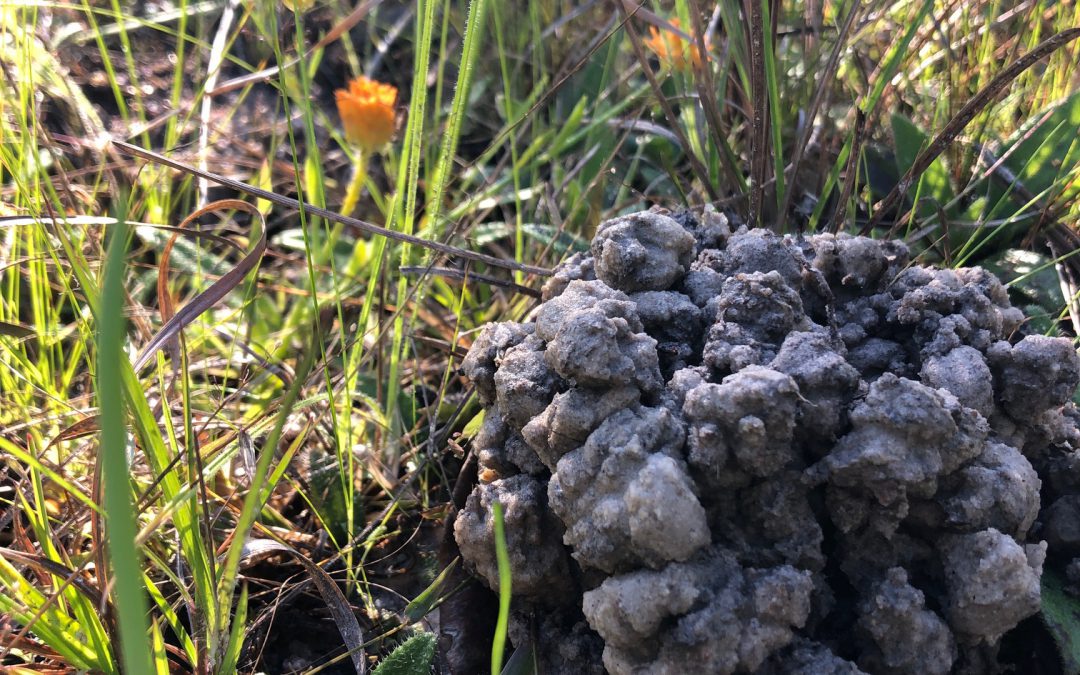
by Carrie Stevenson | May 15, 2020
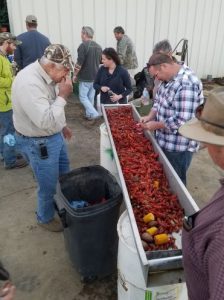
Crawfish boils are popular in the springtime. Crawfish are generally harvested from aquaculture operations. Photo credit: Libbie Johnson, UF IFAS Extension
“You get a line, I’ll get a pole, we’ll go down to the crawdad hole, honey, baby, mine“…there are lots of great zydeco songs singing the praises of crawfish (aka crayfish, crawdads, mudbugs). They are in season now, and while crawfish festivals all around the southeast are canceled due to concerns over COVID-19, they are still available and make for great eating. Most of us would recognize a cooked one alongside a feast of corn and potatoes, but would you know an actual crawfish hole if you came up on it?
Last fall, our office welcomed about 500 kids (over several days) to the 4-H camp in Barrineau Park for a field trip. I showed every single one of them a small muddy mound with an opening in the top, and asked if anyone could tell me what it was. Not a single kid knew! Now, I make sure I point crawfish mounds out to anyone I happen to be walking with, as they are fascinating little structures. Also referred to as crawfish chimneys due to their upright, open construction, they are built by a crawfish in a muddy area, often near a creek or other water source.
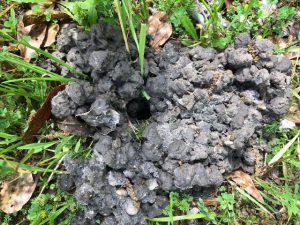
Crawfish mounds are constructed using small pellets of mud, and the opening connects down to a burrow. Photo credit: Carrie Stevenson, UF IFAS Extension
The industrious invertebrate uses its legs and mouth to create pellets of mud as it digs its burrow. It places mud up above the ground, using the mud balls like small bricks. Bricking up the entrance to its burrow (as opposed to placing discarded mud elsewhere) also protects a crawfish from exposure to predators on open soil. The crawfish chimneys can be 6 inches tall (or more!) and connect down to a burrow that may reach 3 feet deep, some straight down and others with side tunnels extending different directions.
Since the crawfish lives in wetland areas, it is theorized that these chimneys extending above the soil allow for better oxygen flow in the burrow. During a drought, crawfish will plug the opening of their mounds with mud, to keep water in the burrow from evaporating.
Crawfish in the wild are rarely harvested, although some folks do fish for them like the song referenced earlier. For the vast majority of crawfish harvested in commercial production, two species are the most popular–the white river crawfish (Procambarus zonangulus) and red swamp crawfish (Procambarus clarkii). They are typically farmed in coordination with rice, as both commodities thrive in flooded conditions. Most aquaculture operations are associated with Louisiana, but at least five other southern U.S. states farm crawfish. To learn more about this industry, check out LSU AgCenter’s informative video.
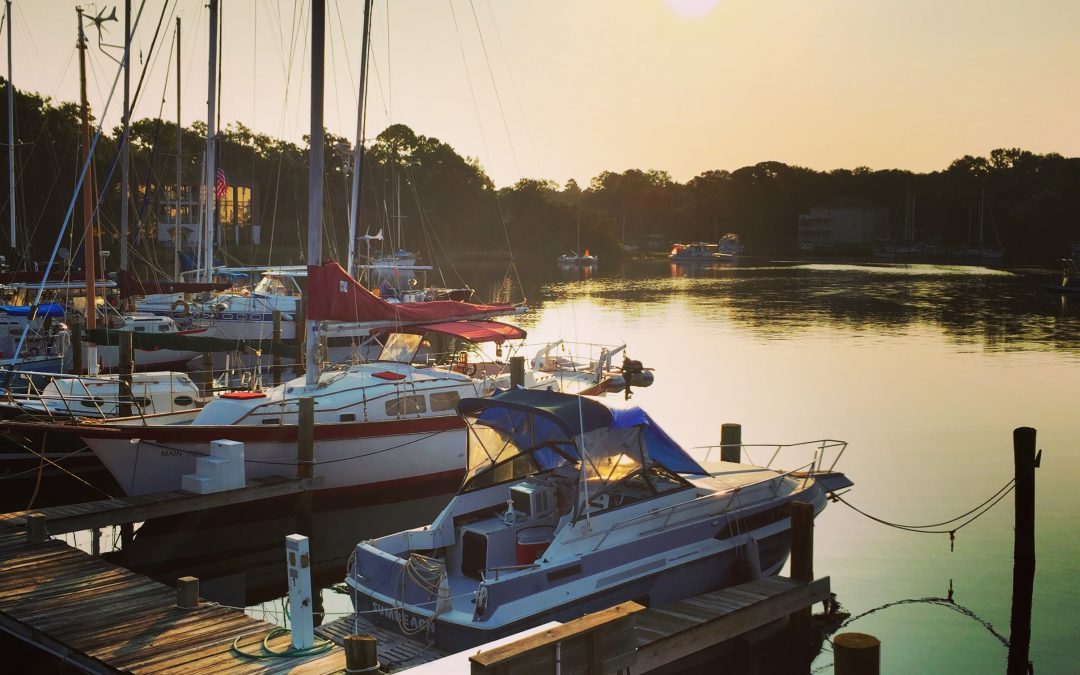
by Scott Jackson | Apr 17, 2020
Florida Sea Grant is maintaining a curated list of disaster assistance options for Florida’s coastal businesses disrupted by COVID-19.
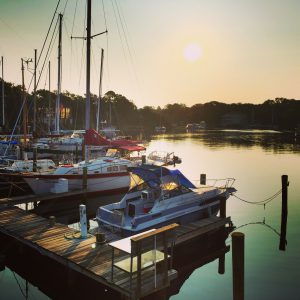
Boats at calmly at rest in Massalina Bayou, Bay County, Florida.
The list contains links to details about well- and lesser-known options and includes “quick takeaway” overviews of each assistance program. Well-funded and widely available programs are prioritized on the list. The page also houses a collection of links to additional useful resources, including materials in Spanish.
“There is a lot of information floating around out there,” says Andrew Ropicki, Florida Sea Grant natural resources economist and one of the project leaders. “We are trying to provide a timely and accurate collection of resources that will be useful for Florida coastal businesses.”
Ropicki and others on the project team stress that the best place to start an application for disaster aid is to visit with your bank or lender and the Florida Small Business Development Center (SBDC). They also suggest contacting local representatives by telephone or email and not to just rely on internet-based applications.
Overview of Selected Disaster Assistance Programs Benefiting Florida Small Businesses including Agriculture, Aquaculture, and Fisheries (COVID-19)
The project team — which includes experts from Florida Sea Grant, University of Florida Institute of Food and Agricultural Sciences (UF/IFAS) Extension, and the UF/IFAS Center for Public Issues Education — reviews the page regularly for accuracy and to include new options.
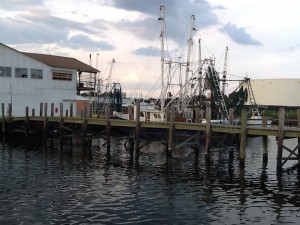
Commercial seafood is a large part of Florida’s economy and culture.
Photo: Rick O’Connor
“[I] really appreciate the outstanding work that you and FSG have done on consolidating the various types of aid available to fishermen due to the virus,” said Bill Kelly, executive director of the Florida Keys Commercial Fishermen’s Association, in a recent email. “I’ve been searching for a comprehensive listing and you just provided it.”
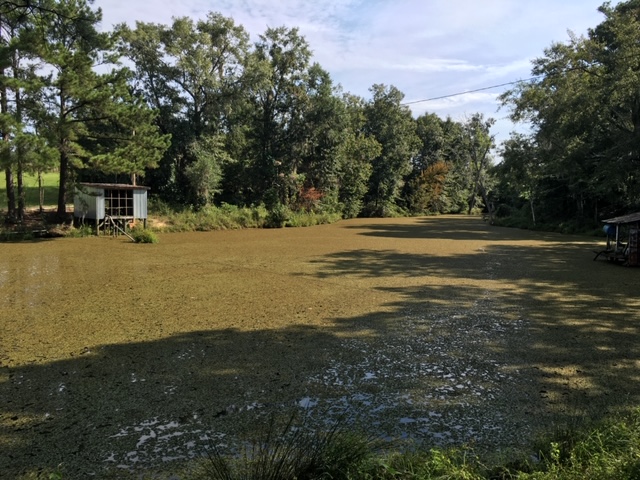
by Shep Eubanks | Sep 13, 2019

Common Salvinia Covering Farm pond in Gadsden County
Photo Credit – Shep Eubanks UF/IFAS Gadsden County Extension
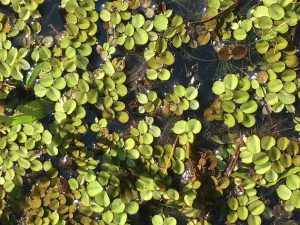
Close up of common Salvinia
Photo Credit – Shep Eubanks UF/IFAS Gadsden County Extension
Aquatic weed problems are common in the panhandle of Florida. Common Salvinia (Salvinia minima) is a persistent invasive weed problem found in many ponds in Gadsden County. There are ten species of salvinia in the tropical Americas but none are native to Florida. They are actually floating ferns that measure about 3/4 inch in length. Typically it is found in still waters that contain high organic matter. It can be found free-floating or in the mud. The leaves are round to somewhat broadly elliptic, (0.4–1 in long), with the upper surface having 4-pronged hairs and the lower surface is hairy. It commonly occurs in freshwater ponds and swamps from the peninsula to the central panhandle of Florida.
Reproduction is by spores, or fragmentation of plants, and it can proliferate rapidly allowing it to be an aggressive invasive species. When these colonies cover the surface of a pond as pictured above they need to be controlled as the risk of oxygen depletion and fish kill is a possibility. If the pond is heavily infested with weeds, it may be possible (depending on the herbicide chosen) to treat the pond in sections and let each section decompose for about two weeks before treating another section. Aeration, particularly at night, for several days after treatment may help control the oxygen depletion.
Control measures include raking or seining, but remember that fragmentation propagates the plant. Grass carp will consume salvinia but are usually not effective for total control. Chemical control measures include :carfentrazone, diquat, fluridone, flumioxazin, glyphosate, imazamox, and penoxsulam.
For more information reference these IFAS publications:
Efficacy of Herbicide Active ingredients Against Aquatic Weeds
Common salvinia
For help with controlling Common salvinia consult with your local Extension Agent for weed control recommendations, as needed.
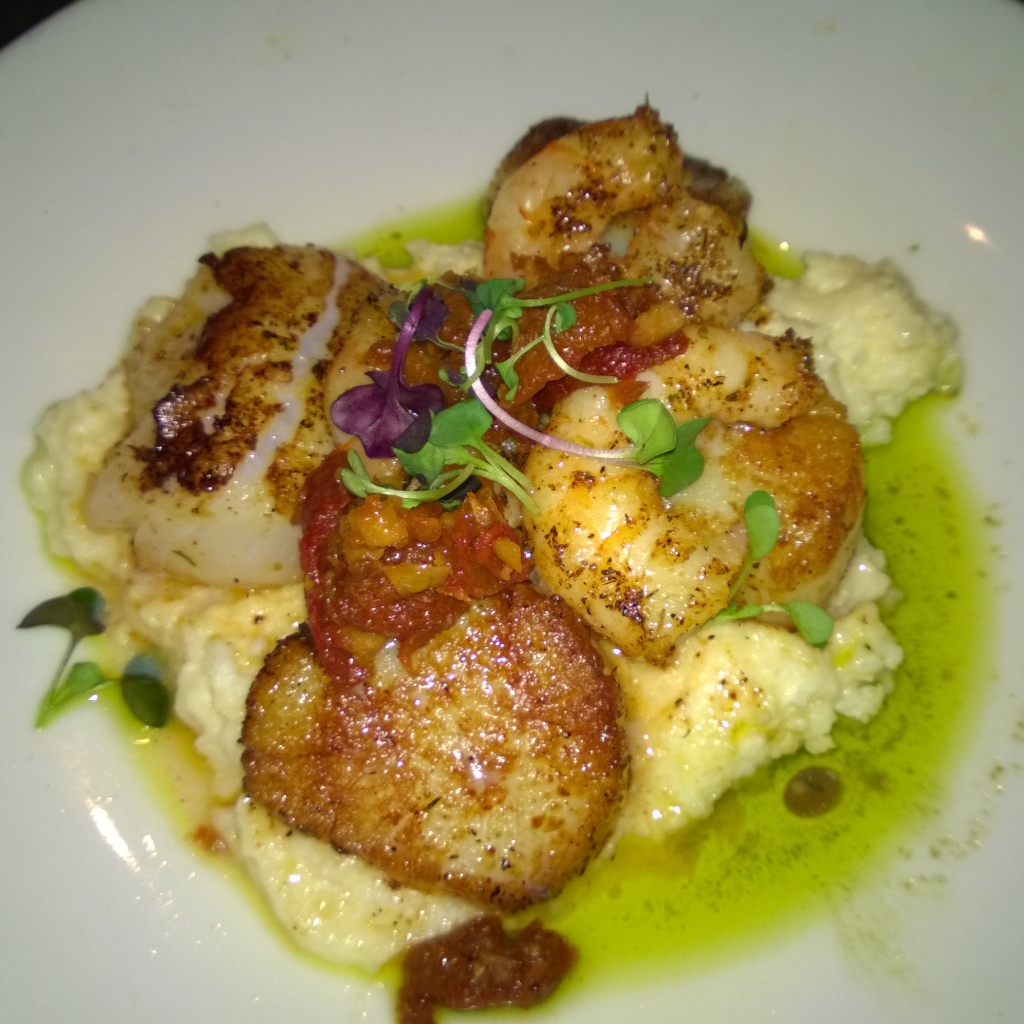
by Laura Tiu | Feb 16, 2018
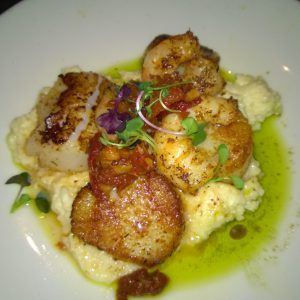
Scallops and shrimp over grits.
I have been involved in the aquaculture industry since the late 1980’s when I got my first job out of college on a tropical fish farm in Plant City, FL. As you can imagine, the industry has changed a lot since then. When folks find out I have worked in aquaculture, the same question seems to arise: “Is farm-raised fish safe to eat as wild caught?” I would like to say that I don’t understand where this question comes from, but over the years I have seen a bewildering number of mass media headlines touting misinformation about farm-raised fish and not enough touting the benefits. In fact, I saw a post this week on Facebook actually claiming that tilapia have no skin or bones and cannot be found in the wild, both not true. It is no wonder people are so confused. Many of the claims made are not research-based and a quick review of the scientific literature will disprove the statements, but who has time for that?
Aquaculture currently supplies over fifty percent of all seafood consumed and will expand in the future due to a limit on the amount of wild fish that can be sustainably harvested, and increasing demand by a growing population. Sustainable, responsible aquaculture is needed to fill that gap. Fish are farmed using a variety of production methods including ponds, raceways, recirculating land-based systems and in ocean net pens. Each one of these fish species and production methods comes with pros and cons, similar to the production of livestock and fruits and vegetables. Each species can be evaluated based on its environmental impact, production method and even country of origin.
The American Heart Foundation recommends eating fish (particularly fatty fish rich in Omega-3s) two times per week. We currently only consume about half of that. This recommendation includes a variety of farm-raised and wild-caught fish. Both are crucial to meet current and future demand for seafood and omega-3 fatty acids. A common misconception is that farmed fish is not as healthy or nutritional valuable as wild caught fish although this claim has been largely disproven. One recent paper (Trushenski et al, 2017) compared the nutritional values of wild-caught and farmed bluegill, largemouth Bass and hybrid striped bass and concluded that the farmed fish provided more long-chain polyunsaturated fatty acids (LC-PUFAs) per portion that wild fish, however both are excellent sources of high quality protein and nutrients.
With the Lenten season upon us, a time of a traditional increase in seafood consumption, what is an easy way to choose wild and farm-raised seafood? One website and smartphone app that I find easy to use is Seafood Watch (www.seafoodwatch.org). Seafood Watch uses an extensive evaluation system using research and a panel of experts to label seafood products as green (best choice), yellow (good alternative) and red (avoid) depending on the variety’s sustainability.
With this information and a little bit of homework, I hope you come to the same conclusion that I have. Both farm-raised fish and wild-caught fish are delicious, nutritious and great additions to your diet.

Baked tilapia, rice and vegetable medley.
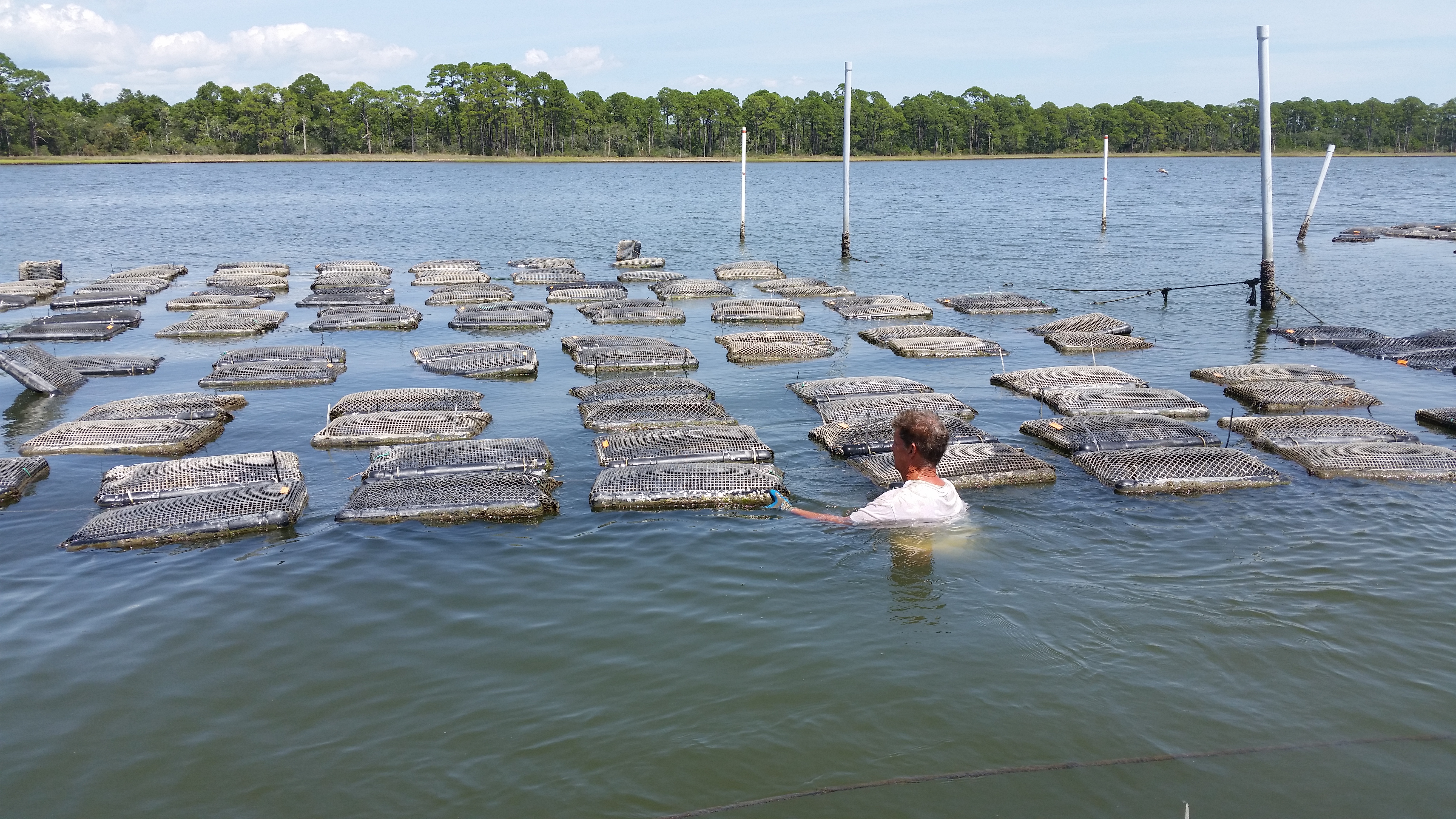
by Erik Lovestrand | Feb 2, 2018
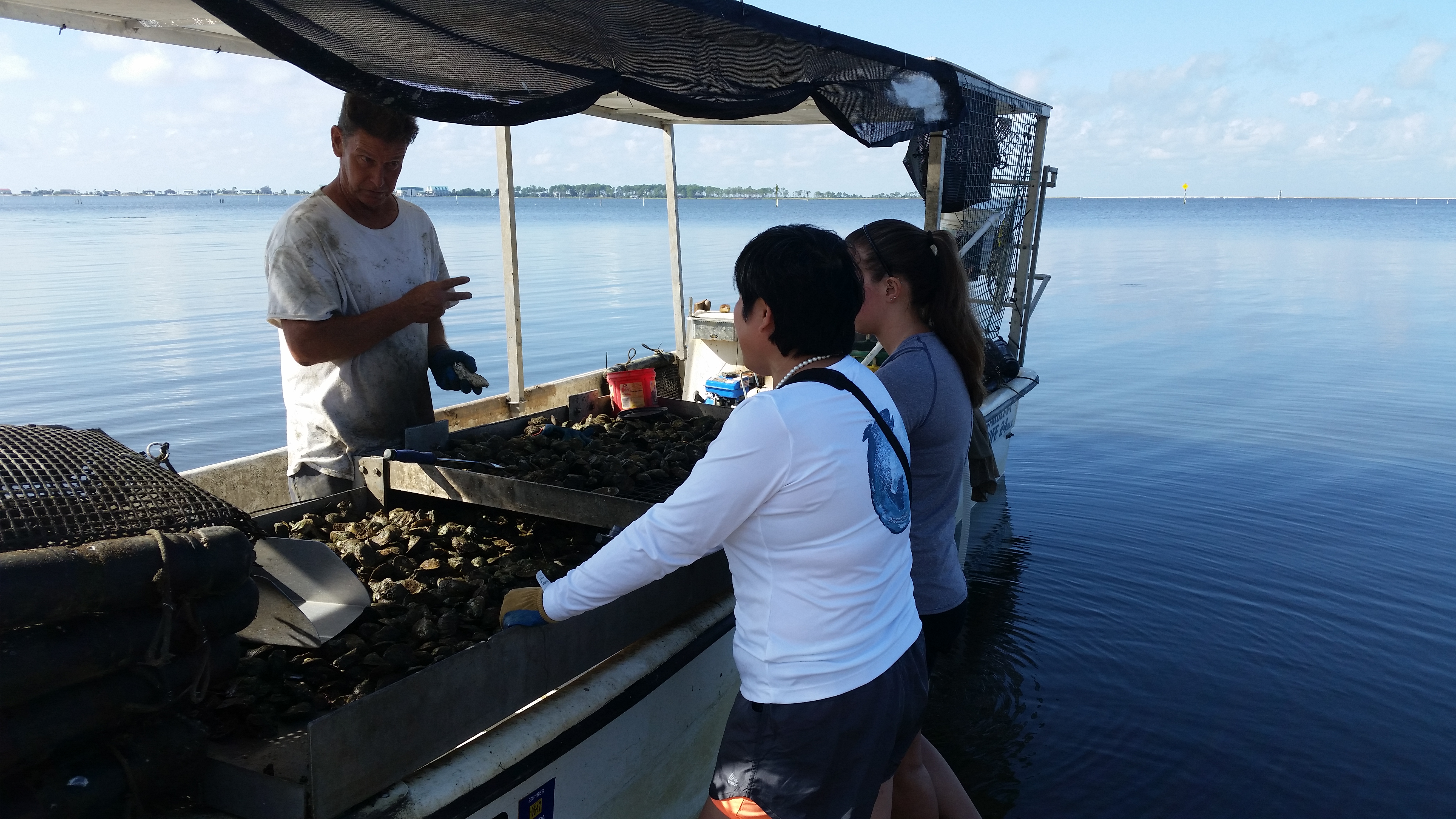
Sorting and re-caging take place on-site at the lease
Photo: Erik Lovestrand
There are a number of parallels than can be drawn between shellfish farming and traditional forms of agriculture that take place on the land. The most obvious similarities are the amount of hard work, grit and faith that are required of the farmer on land or sea. In spite of this there are many “salty” farmers in the Florida Panhandle who have mustered the faith requirement and are now putting in the hard work necessary to help build this budding industry in the Southeastern U.S.
Market demand for quality oysters has continued to outstrip available supplies for several years of late. This has been due in part to better marketing strategies employed by growers as well as clientele becoming aware of the health benefits of fresh oysters; a great supply of important vitamins and minerals, including vitamin C and B vitamins, zinc, selenium and iron. However, supply/demand ratios are not the only important factor in developing a thriving oyster aquaculture industry. Also required, is the necessary infrastructure to support the grower’s equipment needs, enough sources of baby oyster “seed”, a reliable refrigerated transportation network for live shellfish, and the support of regulatory agencies in making water leases available in suitable growing areas.
Fortunately, the stars seem to be aligning for many of these industry-growth necessities and the business of oyster farming is gaining a firmer foundation to build upon. One of the important milestones for Florida was the approval of “full-water-column” leases, which allows the use of floating oyster cages or bags. Previously, oysters were required to be grown on the bay bottom and this made them susceptible to higher levels of predation from crabs and snails and severe biofouling (barnacles and algae) on the exterior of the mesh bags. Heavy biofouling reduces the water flow through the oyster’s growing environment, thus the available food for this filter feeding bivalve.
One critical need for this industry is the availability of quality “seed” (baby oysters) to put in the growing waters. Seed oysters are supplied by hatcheries where oyster brood stocks are spawned and babies are raised to the necessary age for grower needs. Some growers use baby oyster larvae that have not settled and attached yet. These “eyed larvae” are put in a tank with old oyster shell and allowed to attach on the shells, which are then deployed at a lease site. Other growers use seed that has already attached to a small particle of crushed shell and are sold as individual oysters to be placed in grow-out bags or cages. The more recent development of oyster stocks with 3 sets of chromosomes (triploids) have provided growers with an oyster that gets to market size faster. Triploid oysters are infertile and do not use energy for spawning, thereby putting more energy into shell and tissue growth. Federal and state laws also govern where growers can buy their seed in an effort aimed at stopping the spread of shellfish disease from one body of water to another (i.e. Atlantic to Gulf of Mexico, etc.).
Even if all of the hardware and infrastructure is in place, there is still one other factor that plays a significant role in whether an oyster farmer will be successful. Just like the dairy farmer, the cattle rancher, the cotton or peanut grower, or the blueberry producer; backbreaking labor is necessary for many stages of the production cycle. Oyster growers work their leases either bending over the gunnels of a boat or actually being in the water, lifting heavy bags or cages of shellfish, sorting by size, re-caging, and moving lots of materials to and from the lease area. True grit and a dogged determination to stay on top of things, regardless of unpleasant conditions, are vital to raising a successful crop of oysters. And by the way, don’t forget that Mother Nature will have the final word. As all farmers know, they are required to be a good listener when she speaks.
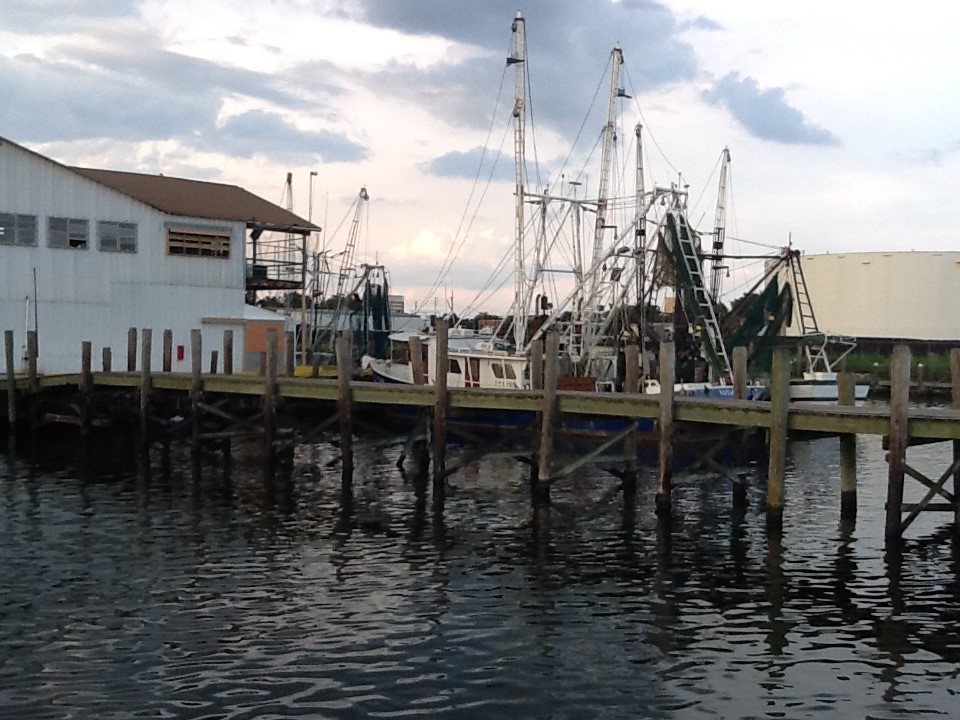
by Rick O'Connor | Jun 17, 2017
ARTICLE WRITTEN BY DR. CHARLES ADAMS, FLORIDA SEA GRANT
The demand for seafood in the US continues to grow. This growth is a function of a number of factors, including the increased awareness of the healthful attributes of many finfish and shellfish products, the increased availability of several key imported, cultured species (shrimp, tilapia, pangasius), and more convenient packaging for home consumption, to name just a few. In terms of wild-caught seafood, effective management at the state and federal level helps ensure the sustainable harvest of traditionally important species, such as reef fish, scallops, flounders, mackerels, and crab.
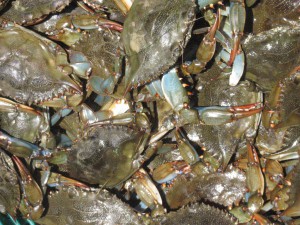
The famous blue crab.
Photo: FWC
According to the latest data from the National Marine Fisheries Service (NMFS), the US domestic fisheries fleet landed about 7.8 billion pounds of edible seafood products, valued at $5.2 billion. Florida plays an important role in this industry, particularly within the Gulf and South Atlantic region. Approximately $250 million worth of seafood is landed by the commercial harvesters in Florida on an annual basis, with some species being landed in Florida, and virtually nowhere else … including pink shrimp, spiny lobster, grouper and stone crab. But wild harvest is not the only source of finfish and shellfish products.
The commercial aquaculture industry is also growing, as the demand for species grown within controlled systems (such as catfish, oysters, striped bass, crawfish, and salmon) continues to increase. The latest NMFS data indicates that the commercial aquaculture industry in the US harvests approximately $1 billion worth of freshwater and saltwater species annually. The success story for aquacultured food items in Florida is molluscan shellfish, in particular cultured hard clams.
Though our wild seafood stocks are sustainably managed and aquaculture production is increasing, approximately 90% of the seafood consumed in the US is imported. Our domestic harvest and culture of seafood simply cannot keep up with demand. We are eating more and more seafood … with the latest NMFS estimate of annual, per capita seafood consumption being 15.5 lbs (edible meat weight). This is the highest level of per capita consumption since 2010. Even though demand is growing, consumers should be confident that the traditional species from our nation’s wild stocks will be there in the future. In addition, the aquaculture industry will help the seafood industry keep pace with growing demand. The seafood industry will continue to be an important source of incomes, jobs, and tax revenue for our coastal communities. And given the increasing number of cultured species and innovative packaging/preparation methods … now is a great time to be a seafood consumer!!
For more information about the US seafood industry, go to https://www.st.nmfs.noaa.gov/Assets/commercial/fus/fus15/documents/FUS2015%20Fact%20Sheet.pdf.















